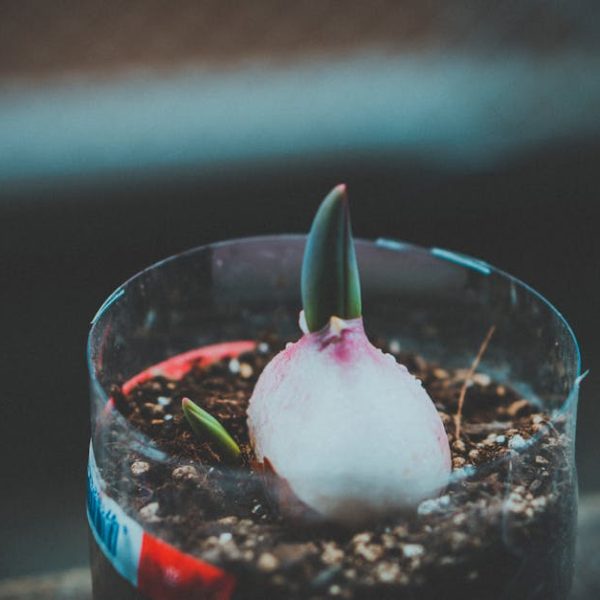Freezing Romaine lettuce is a great method to extend its shelf life while retaining its nutritional values. This process though, is not simply about sticking a head of lettuce in the freezer, but involves several important steps designed to preserve its taste, texture, and nutritional benefits. This article provides tips and insights into the process of freezing Romaine lettuce, to ensure that it remains fresh, crisp and nutritious.
Understanding the Basics of Freezing Romaine Lettuce
When you freeze vegetables, primarily leafy greens like Romaine lettuce, you essentially slow down the enzymatic activity that leads to the degradation of the vegetable. This is why freezing extends the shelf-life of these items. It’s important, however, to properly clean the lettuce before freezing to remove any dirt or bacteria that might affect its quality during the freezing process. There’s a misconception that Romaine lettuce can’t be frozen, likely due to its high water content. However, with the right method and preparation, Romaine lettuce can be successfully frozen and used in many dishes.
Best Practices:
- Clean the lettuce thoroughly under running water
- Use a salad spinner to remove excess water. This ensures the lettuce freezes evenly without ice crystals forming.
Preparing Romaine Lettuce for Freezing
The process of preparing Romaine lettuce for freezing is equally as important as the freezing process itself. First, remove any brown leaves or sections that are wilted or rotting. After cleaning the lettuce, pat the leaves gently with a clean kitchen towel or use a salad spinner to dry them thoroughly. Excess water can lead to a soggy texture once the lettuce is defrosted.
Checklist:
- A sharp knife
- Large bowl
- Salad spinner or clean kitchen towels
- Freezer bags or containers
Best Methods to Freeze Romaine Lettuce
There are two main methods for freezing Romaine lettuce: blanching and direct freezing. Blanching involves dipping the lettuce in boiling water for a brief period before cooling it rapidly in ice water. This process enhances the color and flavor of the lettuce and also kills any bacteria. Direct freezing, on the other hand, involves placing the prepared and dried lettuce in freezer bags or containers and freezing it directly.
Pro Tips:
- Blanch the lettuce for just 1-2 minutes and immediately transfer into ice-cold water to prevent overcooking.
- Remove as much air as possible from the freezer bags before sealing to prevent freezer burn.
Pros and Cons:
Blanching preserves the color and flavor better but requires more preparation time and effort than direct freezing. Direct freezing is simpler and more straightforward but may not retain the color and flavor as well as blanching. The best method depends on your personal preference and the usage of the frozen lettuce.
How to Defrost and Use Frozen Romaine Lettuce
Defrosting and using frozen Romaine lettuce requires mindfulness to ensure the texture and flavor are preserved. It’s advisable not to defrost the lettuce at room temperature as this encourages bacteria growth. Instead, it should be defrosted in the refrigerator overnight or in cold water.
When the lettuce has defrosted, try to use it as soon as possible. It’s worth noting that the texture of the lettuce may slightly change after freezing, becoming a bit softer. This makes it perfect for cooked dishes, such as soups, stews, and stir-fries. Frozen lettuce may not be suitable for fresh salads due to this change in texture.
Pro Tips:
- Warm the lettuce on low heat to prevent it from getting too soft.
- For best flavor, use your frozen Romaine lettuce within nine months.
Common Mistakes when Freezing Romaine Lettuce and How to Avoid Them
Freezing Romaine lettuce is simple, but there are a few mistakes to watch out for. Incorrect cleaning and drying may lead to the lettuce turning slimy once defrosted. Excess water before freezing can also lead to a mushy texture due to the formation of large ice crystals. One common mistake is trying to use the defrosted lettuce in salads; the texture change may make it unappealing.
Best Practices:
- Ensure the lettuce is thoroughly dry before freezing
- Use appropriate freezer bags or containers and remove as much air as possible
- Use frozen lettuce quickly after defrosting
Comparison:
| Fresh Romaine Lettuce | Frozen Romaine Lettuce | |
|---|---|---|
| Texture | Crisp and crunchy | Softer, suitable for cooked dishes |
| Nutrition | Contains all its original nutrients | Retains most nutrients, but some loss may occur during the freezing process |
| Shelf-life | A week to 10 days when refrigerated | Up to 9 months when properly frozen and stored |
In summary, freezing Romaine lettuce is a wonderful way to extend its shelf life. While it may not be suitable for every dish after defrosted, it can still be a nutritious addition to cooked meals. With the right preparation, correct freezing method, and defrosting practice, you will find that your Romaine lettuce can be just as wholesome and tasty as its fresh counterpart.
Key Takeaway:
- Freezing Romaine lettuce is an effective way to extend its shelf life and maintain its nutrition.
- Proper cleaning and drying of the lettuce before freezing is critical to retain taste and texture.
- Blanching and direct freezing are two methods for freezing lettuce, each with their pros and cons.
- Frozen lettuce should be defrosted in the fridge or cold water, not room temperature, to prevent bacteria growth.
- The texture of lettuce changes after freezing, making it more suitable for cooked meals rather than fresh salads.
As we conclude this informative article, let’s take a reassuring note. Keep in mind that, with the right preparation and methods, you can efficiently extend the shelf life of your greens, preserving their goodness. Remember, your health lies in your hands, and these small steps can make a significant difference. All these preventive measures ensure the lettuce you consume, whether fresh or frozen, is safe, nutritious, and packed with flavor—and that’s something you should be proud of!
FAQs
Q: Does freezing lettuce change its nutritional content?
A: Freezing lettuce retains most of its nutrients, although there may be some minor nutrient losses during the freezing process.
Q: Can I use frozen lettuce in salads?
A: Due to a change in texture after freezing, frozen lettuce might not be ideal for fresh salads but is excellent for cooked dishes such as soups or stir-fries.
Q: Is it safe to eat lettuce that has been frozen and then defrosted?
A: Yes, as long as it is defrosted properly—preferably in the fridge or in cold water—it is safe to eat.
Q: How long can I store frozen lettuce?
A: For optimal flavor and nutrition, it’s best to use frozen lettuce within nine months.
Q: What is the primary mistake to avoid when freezing lettuce?
A: The main mistake is not drying the lettuce properly before freezing; excess water can lead to a soggy texture upon defrosting.
Do explore more posts on our website and share this enlightening article with those in need!






